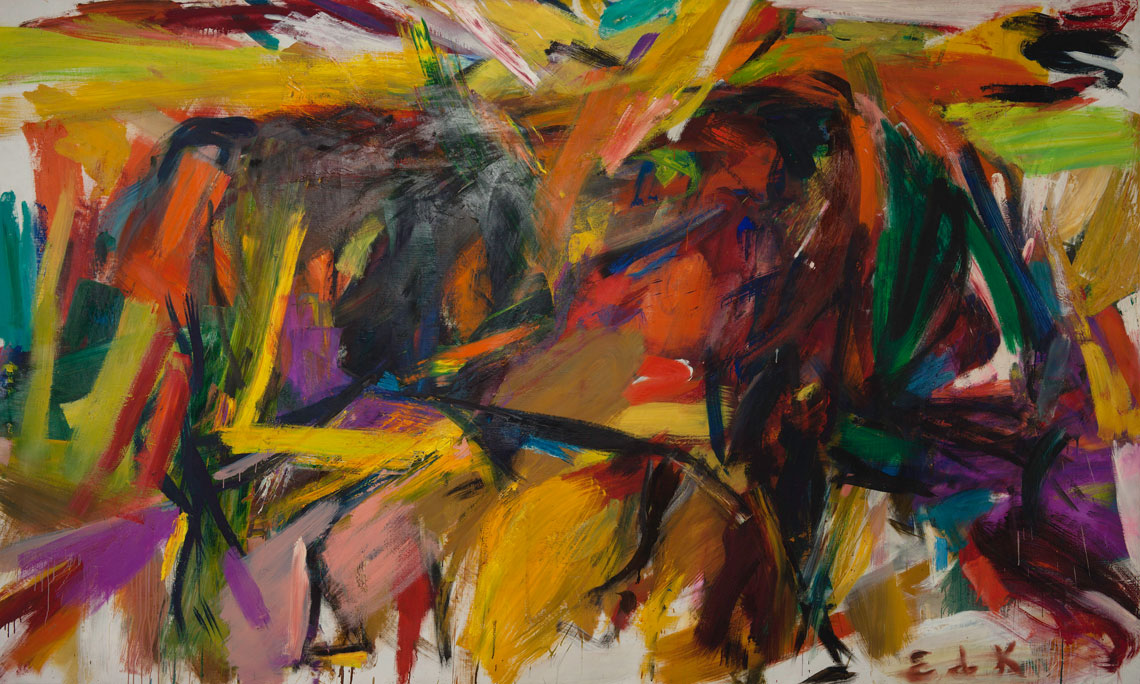Born in Brooklyn, her lifelong enjoyment of art began in her youth under the encouragement of her mother who exposed her to the fine arts and museums. Formal training began in 1938 when she entered the American Artists School. There she was introduced to fellow artist Willem de Kooning, whom she married in 1943. In the mid-to-late 1940s, Elaine de Kooning began her first abstract paintings and worked as an editorial associate at ARTnews. In this role, she wrote some of the very first reviews and articles on artists, including Franz Kline, Hans Hofmann, Mark Rothko, David Smith, Josef Albers, and Arshile Gorky. Her first solo exhibition was in 1952 at the Stable Gallery in New York.
In 1957, she left New York City to teach at the University of New Mexico in Albuquerque. The western scenery influenced her work as did a trip to Ciudad Juárez, located across the Mexican border from El Paso. Here, she saw corridas, or bullfights, that inspired a series of paintings, including the Denver Art Museum’s Bullfight from 1959.
In 1962, she was commissioned by the Truman Library to paint President John F. Kennedy’s portrait. When asked about her style she said, "I'm more interested in character than style. Character comes out of the work. Style is applied or imposed on the work. Style can be a prison.” Her work is known for free brush strokes, a sense of movement, attention to balance and design, alongside deliberate choices about scale, color, form, and composition.
She died in 1989 at the age of 68 leaving a spectacular legacy of art and leadership.
Image credit: Elaine de Kooning, Bullfight, 1959. Oil on canvas; 77-5/8 × 131-1/4 × 1-1/8 in. Denver Art Museum: Vance H. Kirkland Acquisition Fund. ©Elaine de Kooning Trust

